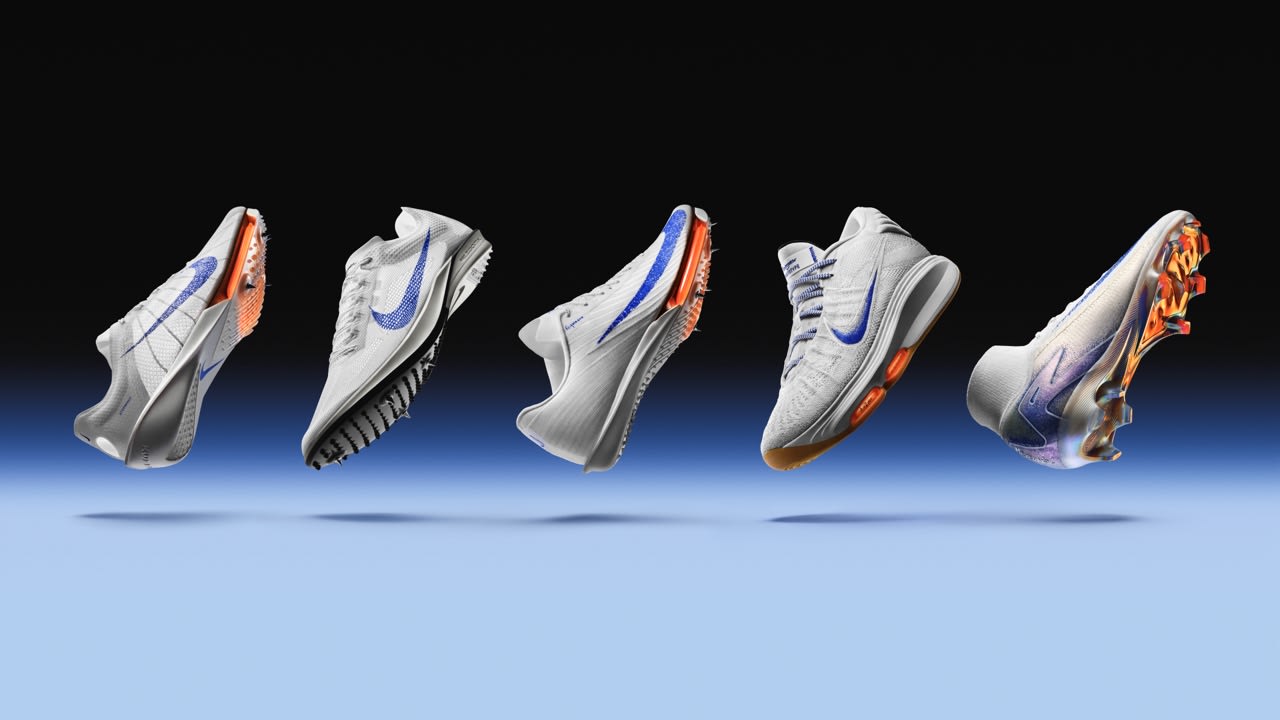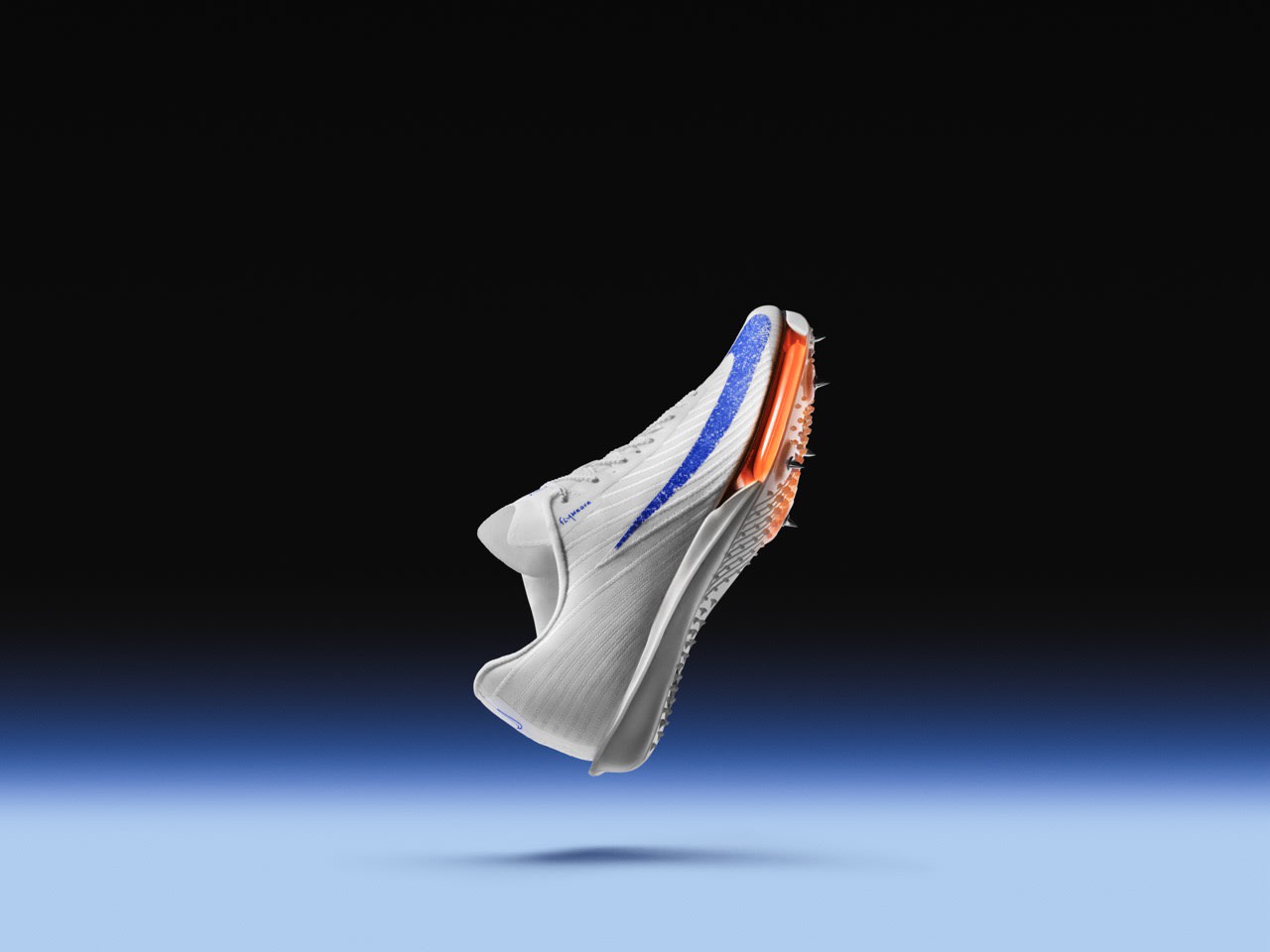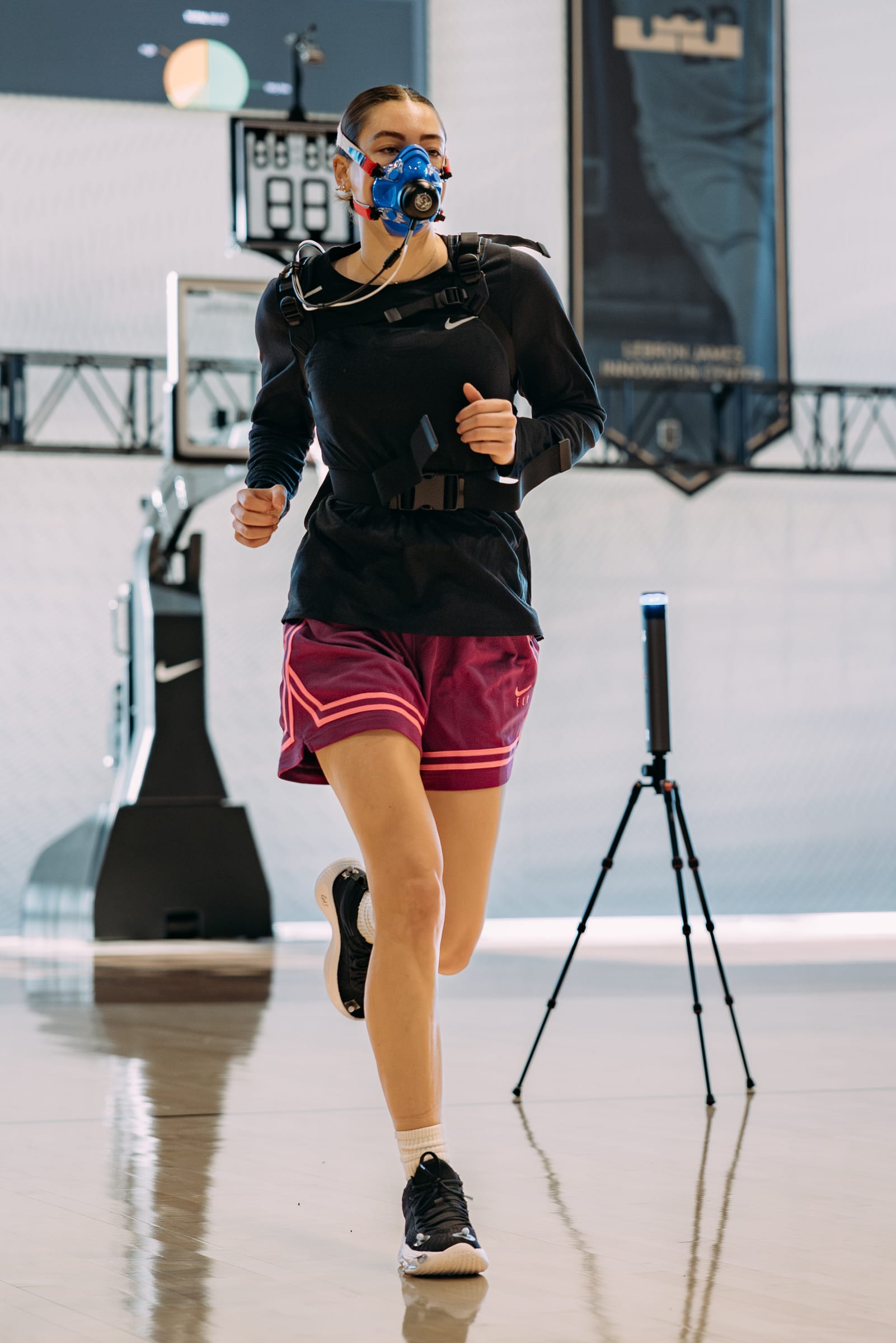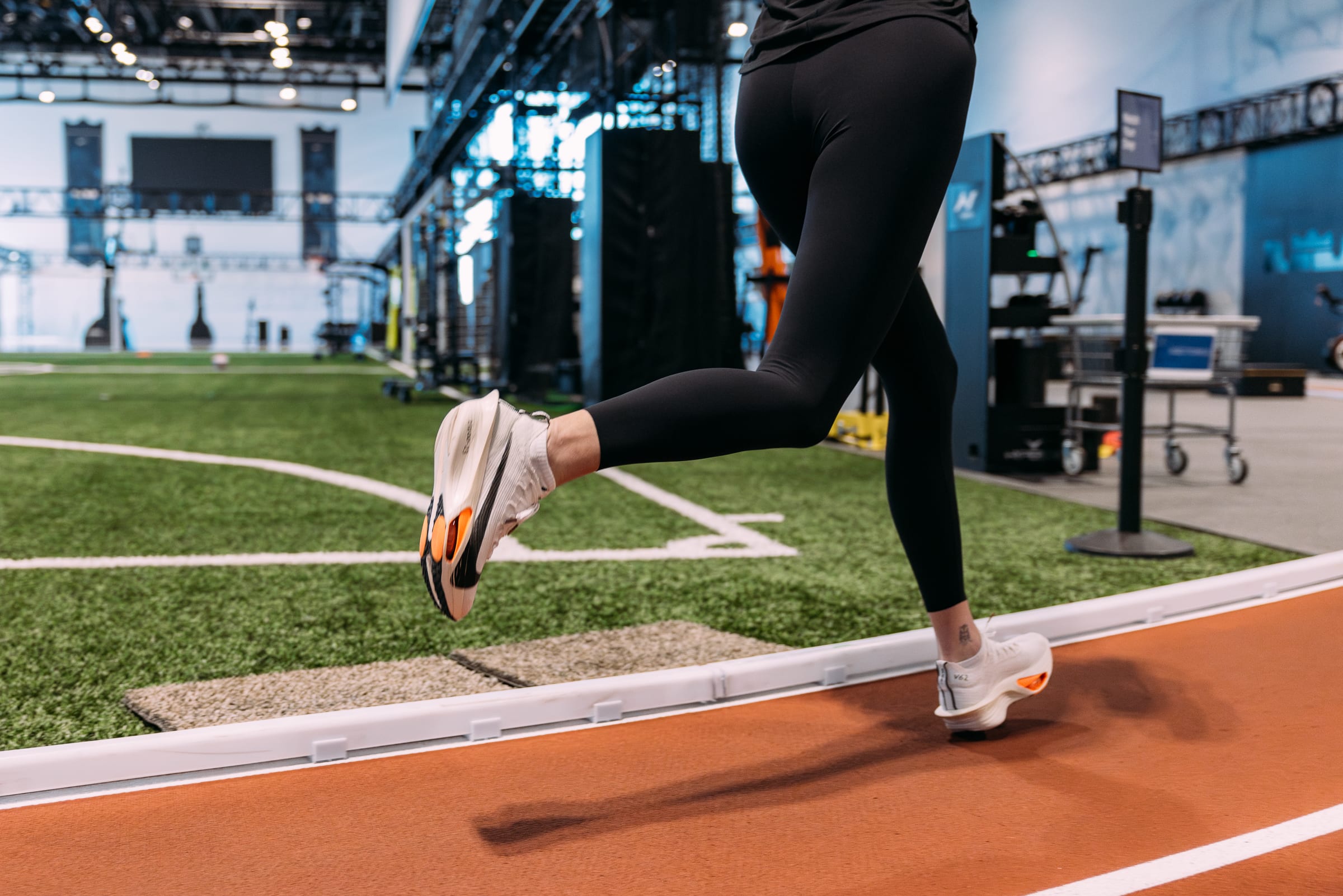
The technology we know as Nike Air almost didn’t happen. Marion Franklin ‘Frank’ Rudy, an aerospace engineer, had a wild idea in the late 1960s: to soften the impact of athletic shoes by embedding tiny airbags within the soles of the footwear. Rudy presented his concept to 23 shoe companies, and one by one, they rejected it. It wasn’t until 1977 that he pitched it to Nike co-founder Phil Knight. Knight took Rudy’s prototype for a test run around the company’s Beaverton, Oregon campus and, satisfied with the results and the shoe’s performance, he decided to push Nike into the future with the innovation we all know as Nike Air.
Nearly 50 years later, 40 years after the Air Max 1 – the first sneaker to visibly show Air – debuted in 1987, and a few months before the Paris 2024 Olympics, Nike unveiled Air’s latest innovations on April 12 in France at Palais Brongniart, the former home of the Paris Stock Exchange. Nike introduced prototypes for the Nike Victory 2 and Nike Maxfly 2 for track athletes, a new basketball sneaker called the Nike G.T. Hustle 3, its most advanced football boot, the 2024 Nike Air Zoom Mercurial, and the Nike Jam for breakdancers. The new Air debut culminated in a fashion show on April 13 starring several Nike athletes including American track and field sprinter Sha'Carri Richardson, American gymnast Jordan Chiles, Kenyan long-distance runner Eliud Kipchoge, French footballer Grace Geyoro, and American tennis superstar Serena WIlliams.
A closer look at Nike Air’s Olympic-ready sneakers

Nike’s design lead times average about four years for an Olympic shoe, and 18 months for a regular sneaker. ‘It always starts with listening to the voice of the athletes,’ Martin Lotti, Nike’s chief design officer, explains to Wallpaper*. ‘It’s sitting down with them, and they are literally telling us what's working and what’s not working. So it’s not leveraging our athletes for billboards and advertising only. The most important thing we get is for insights that we get from them.’
Nike further optimised its Air technology with more than athlete interviews, data, and testing; it also harnessed the power of AI at its Oregon-based Nike Sport Research Lab (NSRL), where all the magic is developed. ‘AI is creative fuel for our teams, allowing us to explore a new unknown with unprecedented speed,’ says Lotti. ‘Before, the main limit you faced as a designer was time. Now, the only limit is your own imagination.’ Thanks to the digital tools and capabilities, Air can be finetuned across size, pressure, and application. Ideas can be prototyped and tested quickly at the NSRL. ‘We’re only scratching the surface when it comes to complex geometries that were simply unimaginable before,’ he explains.

The new Olympic Nike Air shoes share an aesthetic consisting of white uppers, a blue swoosh, and orange accents. The number one need Nike hears from athletes according to Lotti is: ‘Help me be faster.’ Nike built on the 2020 addition of Zoom Air to its track spikes by flattening the outsole profile for a more stable ride. The new Mercurial football boot adds 10 per cent more energy than its predecessor, plus an ultra-light Flyknit upper with two less layers than the previous shoe, so it’s lighter and more malleable. Basketball players had another wish, says Lotti: ‘I want to feel as fresh in the fourth quarter as I did in the first.’ Research showed the new G.T. Hustle 3 did just that, proving that the players consumed less oxygen for the same amount of work they did with the G.T. Hustle 2. ‘Air offers the most energy return of anything else out there; it’s the gold standard,’ says Lotti. ‘So, every improvement, every gain they make, we give more of that back to them.’
The NSRL received insights for its database from 6,000 athletes, including breakdancing Olympic hopeful Logan ‘Logistx’ Edra. Edra, who hopes to participate in breakdancing’s Olympic debut, demonstrated her moves for the new Jam, a breakdancing sneaker which uses Air and features an upper made of mesh, leather, and suede, and a drop-in midsole that cushions impact and lets dancers feel close to the ground.

‘I had to give them a lot of feedback that was personal to me and dance because they're still learning about what we like as breakers, and what we need for our shoes,’ the breakdancer tells Wallpaper*. Edra danced, spun, slid, and tried to beat up the prototypes to test the upper’s durability and the sneaker’s flexibility. ‘I remember in the beginning the shoe was a lot heavier and less flexible, less durable,’ she says. ‘When I tried the recent model I was like, damn these feel super light. These feel perfect for breaking and I feel the details of how much they put into the shoe technology-wise to make it suitable for breaking.’
‘If it’s not new and better, honestly, it doesn't deserve a Swoosh,’ says Lotti. The true test for Nike Air’s latest innovations will be during the Paris 2024 Summer Olympic Games from July 26 to August 11, 2024.







